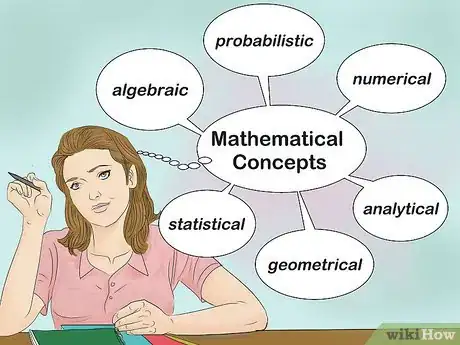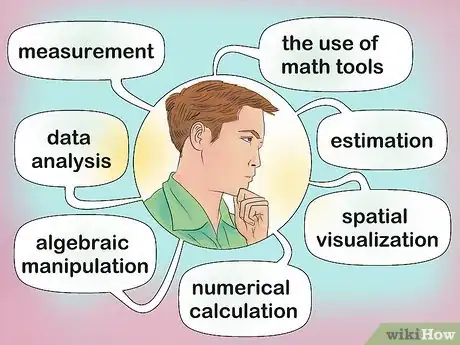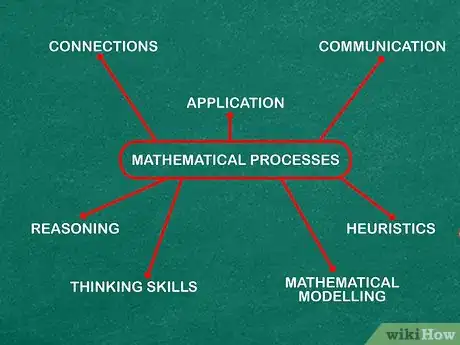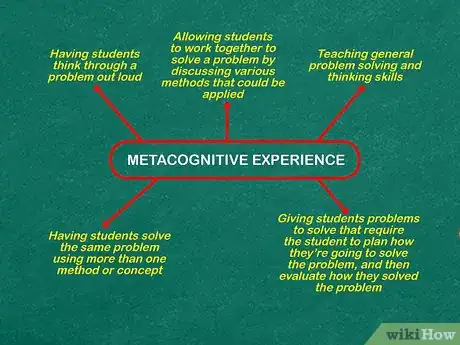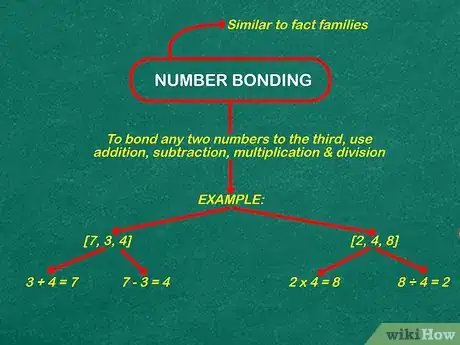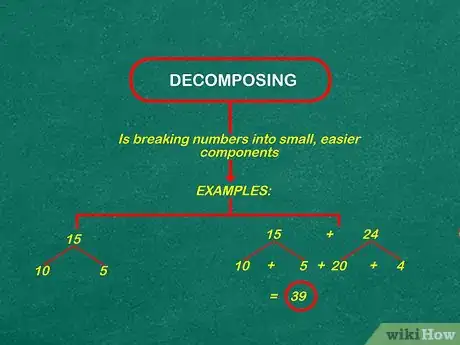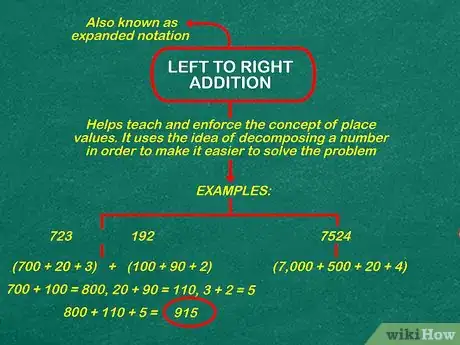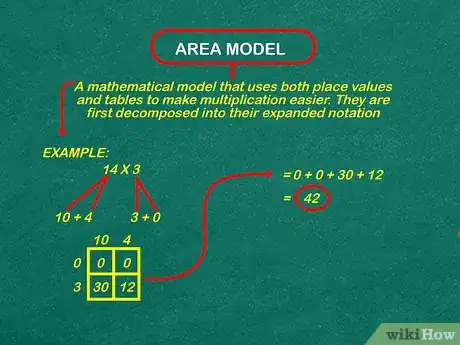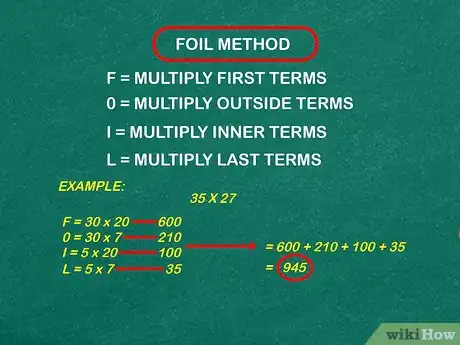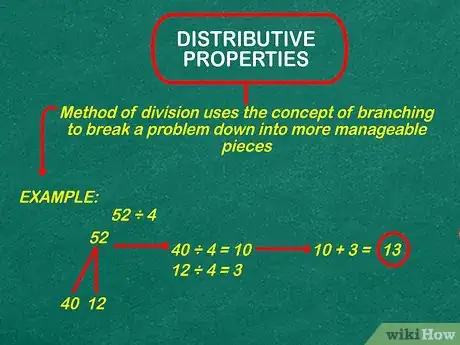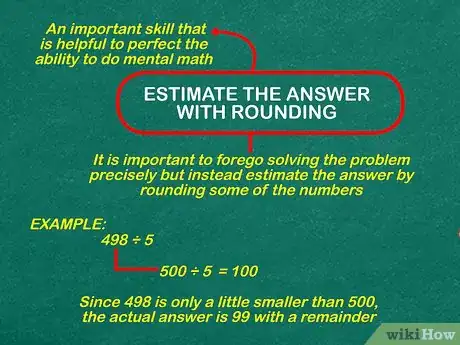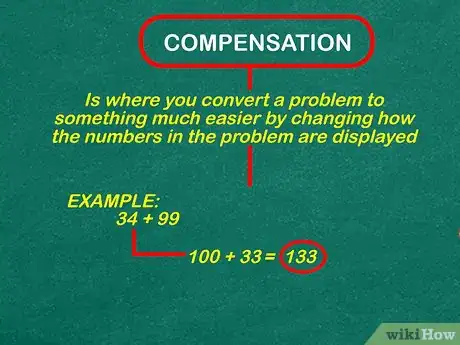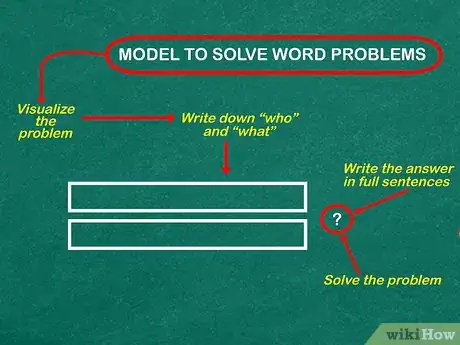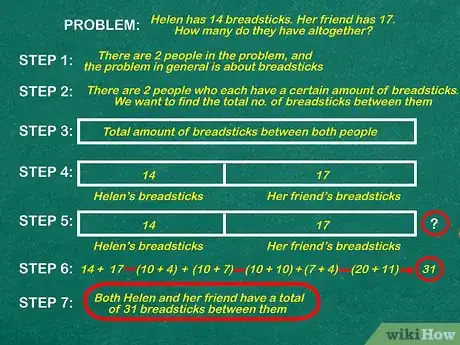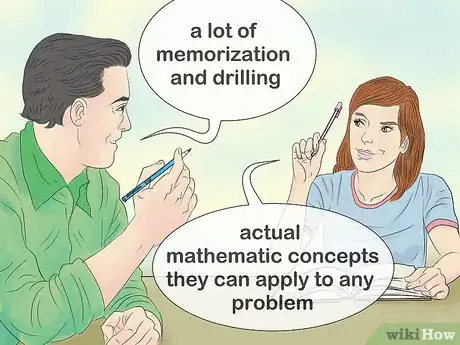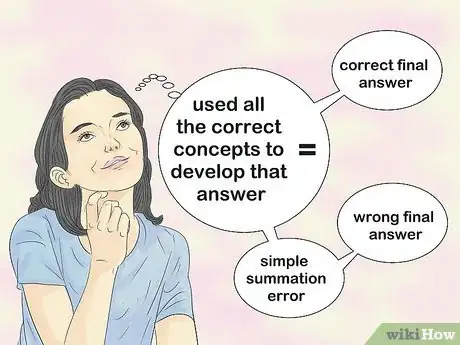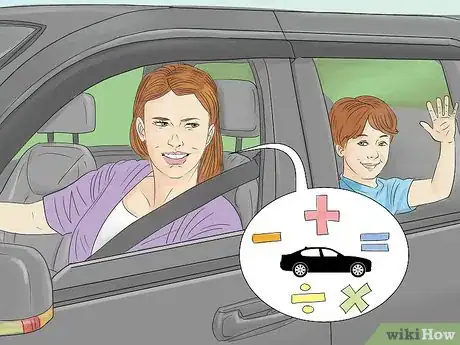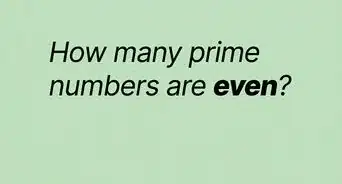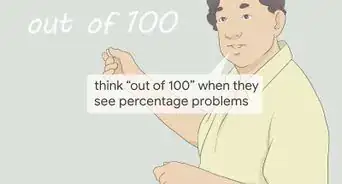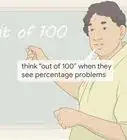This article was co-authored by wikiHow Staff. Our trained team of editors and researchers validate articles for accuracy and comprehensiveness. wikiHow's Content Management Team carefully monitors the work from our editorial staff to ensure that each article is backed by trusted research and meets our high quality standards.
wikiHow marks an article as reader-approved once it receives enough positive feedback. In this case, 88% of readers who voted found the article helpful, earning it our reader-approved status.
This article has been viewed 74,940 times.
Learn more...
Singapore Math is a method of teaching math that was developed in 1982 in Singapore. Since then it has been used in schools around the world, including the United States. Singapore Math focuses on developing an understanding of the concepts before actually teaching the procedures. It uses both a hands-on and visual approach to teaching, and emphasizes a strong sense of numbers and problem solving.[1]
Steps
Understanding the Philosophy of Singapore Math
-
1Learn the framework of Singapore Math. Before you can effectively teach Singapore Math, you need to understand not only how it works, but the philosophy behind its development. Singapore Math probably isn’t like the math education you grew up with, so it may take a little getting used to. The general philosophy of Singapore Math is best explained using its framework, which has 5 components: Concepts, Skills, Processes, Attitudes, and Metacognition. These 5 components are key to the development of mathematical problem solving abilities.
- Concepts refers to numerical, algebraic, geometrical, statistical, probabilistic, and analytical concepts.
- Skills refers to numerical calculation, algebraic manipulation, spatial visualization, data analysis, measurement, use of mathematical tools, and estimation.
- Processes refers to reasoning, communication and connections, thinking skills and heuristics, and application and modelling.
- Attitudes refers to beliefs, interest, appreciation, confidence, and perseverance.
- Metacognition refers to monitoring of one’s own thinking and self-regulation of learning.
-
2Understand the mathematical concepts. Students need to learn each of these mathematical concepts — numerical, algebraic, geometrical, statistical, probabilistic, and analytical — as individual ideas, but more importantly, they need to learn how they are connected together. Students need to be given a selection of materials and examples in order to grasp these concepts and understand how they are all connected. They also need to be able to apply these concepts in active mathematical problem solving in order to be more confident with their mathematical skills.Advertisement
-
3Develop the mathematical skills. Students need to learn a variety of mathematical skills, including: numerical calculation, algebraic manipulation, spatial visualization, data analysis, measurement, the use of math tools, and estimation. They need these skills in order to learn and use the mathematical concepts they’re being taught. They key to Singapore Math, however, is not to over-emphasize the “how” and under-emphasize the “why.” It is vital that students understand why a mathematical principle works, not just how to solve a mathematical problem.
-
4Comprehend the mathematical processes. Mathematical processes, sometimes also referred to as knowledge skills, include such abilities as: reasoning, communication and connections, thinking skills and heuristics, and application and modelling. All of these knowledge skills are needed and used to better understand a mathematical problem and the process that is used to solve it.
- Reasoning — is the ability to analyze a specific mathematical problem and develop logical arguments about the problem. Students learn these skills by applying the same reasoning to different mathematical problems in different contexts.
- Communication — is the language of mathematics. A student needs to be able to understand the mathematical language of a problem, and express concepts, ideas, and arguments in that same language.
- Connections — is the ability to connect mathematical concepts together. It is also the ability to link mathematical ideas to non-mathematical subjects and the real world. Being able to make these connections allows the student to actually make sense of what is being taught in the context of their day-to-day lives.
- Thinking Skills — are skills that can help a student think the way through a mathematical problem, and may include: classifying, comparing, sequencing, analyzing parts or wholes, identifying patterns and relationships, induction, deduction, and spatial visualization.
- Heuristics — are similar to thinking skills and are divided into four categories: the ability to provide a representation of the problem (e.g. diagram, list, etc.); the ability to make a calculated guess; the ability to work through the process in various ways; and the ability to alter the problem in order to better understand it.
- Application — means using the mathematical problem solving skills a student develops for a variety of reasons, including every day problems and situations.
- Mathematical Modelling — is being able to apply representations of data to a specific problem and then determine which methods and tools should be used to solve the problem.
-
5Shape mathematical attitudes. For some reason math always gets a bad reputation in school. However, this reputation doesn’t necessarily develop because math is hard. It partly develops because math can be boring. What kid wants to spend hours learning their times tables!? Mathematical attitudes is the concept of making math fun and exciting so a child’s experiences with learning math are positive ones.
- In addition to fun and exciting, mathematical attitudes also refers to the ability for a student to take a math concept, method, or tool they’ve learned and use it in their actual day-to-day lives. This type of application happens when a student understands why a concept works and realizes what other situations that concept can be applied to.
-
6Provide a metacognitive experience. Metacognition is an odd concept — it relates to being able to think about how you’re thinking, and proactively control that thinking. It is used to better teach students problem solving skills without overwhelming them. Some ways in which metacognition is used to teach Singapore Math are:
- Teaching general (non-mathematical) problem solving and thinking skills and demonstrating how these skills can be used to solve problems (both mathematical and non-mathematical).
- Having students think through a problem out loud, so their minds are focused only on the problem at hand.
- Giving students problems to solve that require the student to plan how they’re going to solve the problem, and then evaluate how they solved the problem.
- Having students solve the same problem using more than one method or concept.
- Allowing students to work together to solve a problem by discussing various methods that could be applied.
-
7Apply the approach in stages. Singapore Math does not attempt to teach a student all concepts and methods all at once. Instead these concepts are introduced in stages over a period of time. First a student is taught a concrete concept that is very specific, such as manipulating numbers by counting. Then the student is taught the concept using pictures instead of actual numbers. Finally the student is taught the concept using an abstract approach where a number often represents something else.
Using Singapore Math Teaching Methods
-
1Explain the concept of number bonding. Number bonds are similar to fact families. Fact families are groups of numbers that are somehow related to each other, or in the same family. For example, [7, 3, 4] can be considered a fact family because the three numbers are somehow related to each other. By using addition and subtraction, you can bond any two numbers to the third. In this case, 3 + 4 = 7, or 7 - 3 = 4.
- A great starting point is using fact families that add up to 10, because 10 is considered an easier (or friendlier) number to deal with. Plus, once you learn 10, you can apply the same concepts to multiples of 10.
- Number bonds are not limited to addition and subtraction, you can also use multiplication and division. For example, [2, 4, 8] where 2 x 4 = 8, or 8 / 4 = 2.
-
2Decompose numbers by using branching. Decomposing is breaking numbers into small, easier components. In this case branching diagrams are used to explain and understand the concept. For example, decomposing 15 into smaller components of 10 and 5. A branching diagram would have the number 15 with two lines pointing downwards from it, pointing towards a 10 and a 5 (similar to a family tree).
- Students should be taught to decompose larger numbers into smaller, friendlier numbers. In the above example, both 10 and 5 are considered friendly numbers. If we wanted to decompose the number 24 into friendly numbers, we’d use 20 and 4.
- An example of a full problem would be: what is 15 plus 24? Mentally, adding the number 15 to 24 may be a little daunting. Instead of trying to add those two big numbers, we decompose them into smaller, friendlier and more manageable numbers — 15 is decomposed into 10 and 5, 24 is decomposed into 20 and 4. Now, instead of 15 + 24 we have 10 + 5 + 20 + 4. Mentally, adding 10 and 20 together and 4 and 5 together is much easier. Now we have 30 + 9, which is very easy to add together to get 39.
- The above example would use branching diagrams drawn on paper to work through the problem, which would eventually lead the student to be able to decompose numbers mentally in order to solve a problem.
-
3Start with left-to-right addition. Singapore Math does eventually teach addition, subtraction, multiplication, and division using numbers in columns and moving from right-to-left, but first the concept of adding from left-to-right is taught. Left-to-right addition helps teach and enforce the concept of place values. Left-to-right addition uses the idea of decomposing a number in order to make it easier to solve the problem. This decomposition is also known as expanded notation and would look like this: 7,524 could be expanded and written as [7,000 + 500 + 20 + 4]. The order of the numbers in the expanded notation follows the place value concept.
- At the risk of confusing the situation, a place value is how we view a number from right-to-left. For example, the number 1,234 can be broken down into place values where 4 is in the “ones” place, 3 is in the “tens” place, 2 is in the “hundreds” place, and 1 is in the “thousands” place.
- For example, if we wanted to add 723 and 192 together, using left-to-right addition and expanded notation would result in [700 + 20 + 3] + [100 + 90 + 2]. The student can now add numbers with similar place values from left-to-right like this: 700 + 100 = 800, 20 + 90 = 110, and 3 + 2 = 5. The final step would be to add the numbers from all place values together like this: 800 + 110 + 5 = 915.
-
4Multiply using the area model. The area model for multiplication is a mathematical model that uses both place values and tables (or boxes or matrices) to make multiplication easier. When two numbers are being multiplied together, they are first decomposed into their expanded notation.
- If the numbers being multiplied are both double-digits, then a 2x2 matrix is drawn. The matrix itself will have 4 blank boxes.
- The expanded numbers being multiplied are then written on the outside of the matrix — 2 numbers above the matrix, one in each column; and 2 numbers to the right of the matrix, one in each row.
- Each box is then filled with the multiplication of the number directly above it in the column, and directly to the right of it in the row.
- Once all 4 boxes are filled, those 4 numbers are added together to obtain the final result.
- Example: 14 x 3 would be expanded to be [10 + 4] + [0 + 3]. The 10 and 4 would be written above the 2x2 matrix, one number in each of the two columns. The 0 and 3 would be written to the right of the 2x2 matrix, one number in each of the two rows. Then the 4 blank boxes would be filled with the products of the following numbers: 10x0=0, 4x0=0, 10x3=30, and 4x3=12. Then the 4 products are added together as 0 + 0 + 30 + 12 which would then equal 42.
-
5Try the FOIL method for multiplication. The FOIL method for multiplication uses a horizontal method instead of the matrix used in the area model. FOIL stands for: F = multiply FIRST term, O = multiple OUTSIDE terms, I = multiply INNER terms, and L = multiply LAST terms. Once each of these four sets of terms are multiplied to each other, the four resulting products can be added together to obtain the final result.
- Example: To use the FOIL method to multiply 35 by 27 you would first multiply the FIRST terms (30 x 20), then you would multiply the OUTSIDE terms (30 x 7), then you would multiply the INNER terms (5 x 20), and finally you would multiply the LAST terms (7 x 5). Then you would add the four results together = 600 + 210 + 100 + 35 which equals 945.
-
6Divide using distributive properties. This method of division uses the concept of branching to break a problem down into more manageable pieces. A division problem is made up of a dividend and a divisor (i.e. dividend / divisor). The dividend is decomposed using a branching diagram. Then each of the decomposed branches are divided by the divisor, and then those two terms get added together to obtain the final result.
- Example: To use this method to divide 52 by 4 you would start by decomposing 52 into 40 and 12 using a branching diagram. Then both 40 and 12 are divided by 4. The results would be: 40 / 4 = 10 and 12 / 4 = 3. The final result would be 10 + 3 = 13, which means 52 / 4 = 13.
-
7Estimate the answer with rounding. As a student learns more complicated math problems, it is important to ask them to forego solving the problem precisely but instead estimate the answer by rounding some of the numbers. This is an important skill that is helpful to perfect the ability to do mental math. The rounding is based on place values, and both rounding up and down should be considered.
- Example: To determine 498 divided by 5 without writing down any calculations, it’s easier to round 498 up to 500 and then divide 500 by 5, which is 100. Since 498 is only a little smaller than 500, the actual answer is 99 with a remainder.
-
8Use compensation to make a problem easier. Compensation is something you probably at some point when trying to figure out a math problem, you just never had a name for it before! Compensation is where convert a problem to something much easier by changing how the numbers in the problem are displayed. The actual problem itself isn’t changed, but by moving the numbers around it makes it easier to calculate the answer in your head.
- Example: If you want to add 34 to 99 it might take a bit of figuring. By changing the problem to something easier to handle, it can be solved mentally much faster. In this case we might move the value of 1 from the 34 to the 99, making the new problem 100 + 33. Suddenly the answer is exceptionally obviously, 133.
-
9Draw a model to solve word problems. Mathematical word problems, by their very nature, are not always as intuitive as mathematical problems with numbers. One way to solve a complicated word problem is to approach it using a systematic process that includes drawing a visual representation of the problem so it can easily be solved. The steps to solving a word problem using modelling are:
- Step 1: Read the full question without paying too much attention to the numbers that are mentioned. The first time the problem is read, the student should try to visualize what the problem is saying. Then read the problem a second time and take note of the actual numbers involved.
- Step 2: Decide what the problem is actually about and write down the “who” and “what” the problem is about.
- Step 3: Draw unit bars of equal length to eventually help with the modelling and visualization of the problem. A unit bar is literally a rectangular bar drawn on the paper.
- Step 4: Reread the whole problem, one phrase at a time. Use the unit bars you’ve drawn (draw more if needed) to visually represent the information in the problem.
- Step 5: Determine the exact problem being solved and add a question mark to the unit bars to represent the final answer you’re looking for.
- Step 6: Using the visualizations you’ve drawn, plus mathematical concepts and skills you’ve already learned, solve the problem and determine what the question mark should be. It is important at this stage to write down whatever calculations you made so you can go back and check your answer if needed.
- Step 7: Solve the problem completely by writing the answer in full sentences. Since it’s a word problem, your final answer should also be in words.
-
10Understand how to solve a word problem with modelling. In order to better understand how modelling works to solve a word problem, review the following example. You should also consider using your students’ textbook or materials to practice the process on your own.
- Example: The word problem is, Helen has 14 breadsticks. Her friend has 17. How many do they have altogether? The resulting steps are noted below:
- Step 1: Read the problem the first time and note that there are two people in the problem, and the problem in general is about breadsticks.
- Step 2: Note there are two people who each have a certain amount of breadsticks. We want to determine the total number of breadsticks both people have.
- Step 3: Draw one big unit bar to represent the TOTAL amount of breadsticks between both people.
- Step 4: Draw a line through the unit bar. The bar to the left of the line represents the 14 breadsticks that Helen has. The bar to the right of the line represents the 17 breadsticks her friend has.
- Step 5: The question mark (i.e. the final answer) is the number represented the entire unit bar.
- Step 6: Based on everything we’ve learned and know, we want to add 14 and 17 together to get the answer. We might use left-to-right addition to solve the problem by breaking the numbers into expanded notation, such as: [10 + 4] + [10 + 7] = [10 + 10] + [4 + 7] = 20 + 11 = 31.
- Step 7: The final written answer could be: Both Helen and her friend have a total of 31 breadsticks between them.
Supporting A Child’s Learning
-
1Know it is different from what you learned in school. Singapore Math was only introduced in the United States in the 1990s. Anyone who went to elementary school before the 1990s would not have had Singapore Math in their curriculum. Instead you likely needed to do a lot of memorization and drilling (like the times tables). Singapore Math teaches children the actual mathematic concepts in such a way that they can apply those concepts to any problem.
-
2Allow a child to use the Singapore method while doing homework. While you watch a child do math homework, you probably won’t recognize the methods they’re using. But do not let this discourage you, or them. Support the child’s math skills development by learning the concept of the Singapore method yourself.
- You may be really tempted to have a child learn some of the drills you learned, but try to steer yourself away from this. It may only end up confusing the child at school.
-
3Recognize a child's need to be able to explain the answer. In previous math curriculum the correct answer to any math problem was the goal — regardless of how you got there. In Singapore Math the child needs to be able to explain their thought process from start to end, and explain how they got the answer they did.
- You may find that a child’s final answer is incorrect, but that they used all the correct concepts to develop that answer. It might be that there was a simple summation error in the process that created the wrong final answer, but the child actually understands what they’re doing.
-
4Use Singapore Math materials at home. Regardless of whether a child is learning Singapore Math in school, they can still learn it at home. There are many Singapore Math materials available (like textbooks and workbooks) that you can use to help a child understand and learn math.
- If you find the process successful at home, you may even want to encourage your school board to consider changing curriculum (if they haven’t already).
-
5Play games that include a math component. One of the best ways to teach a child math is to play games with them that include math concepts. You can do this regardless of what type of teaching method is used in school.
- Example — ask a child to identify shapes of various objects you pass while you're in the car.
- Example — ask a child to help you calculate the amount of ingredients needed in a recipe that you want to cut in half, or double.
- Example — ask a child to calculate how fast the car is travelling using facts other than the speedometer.

